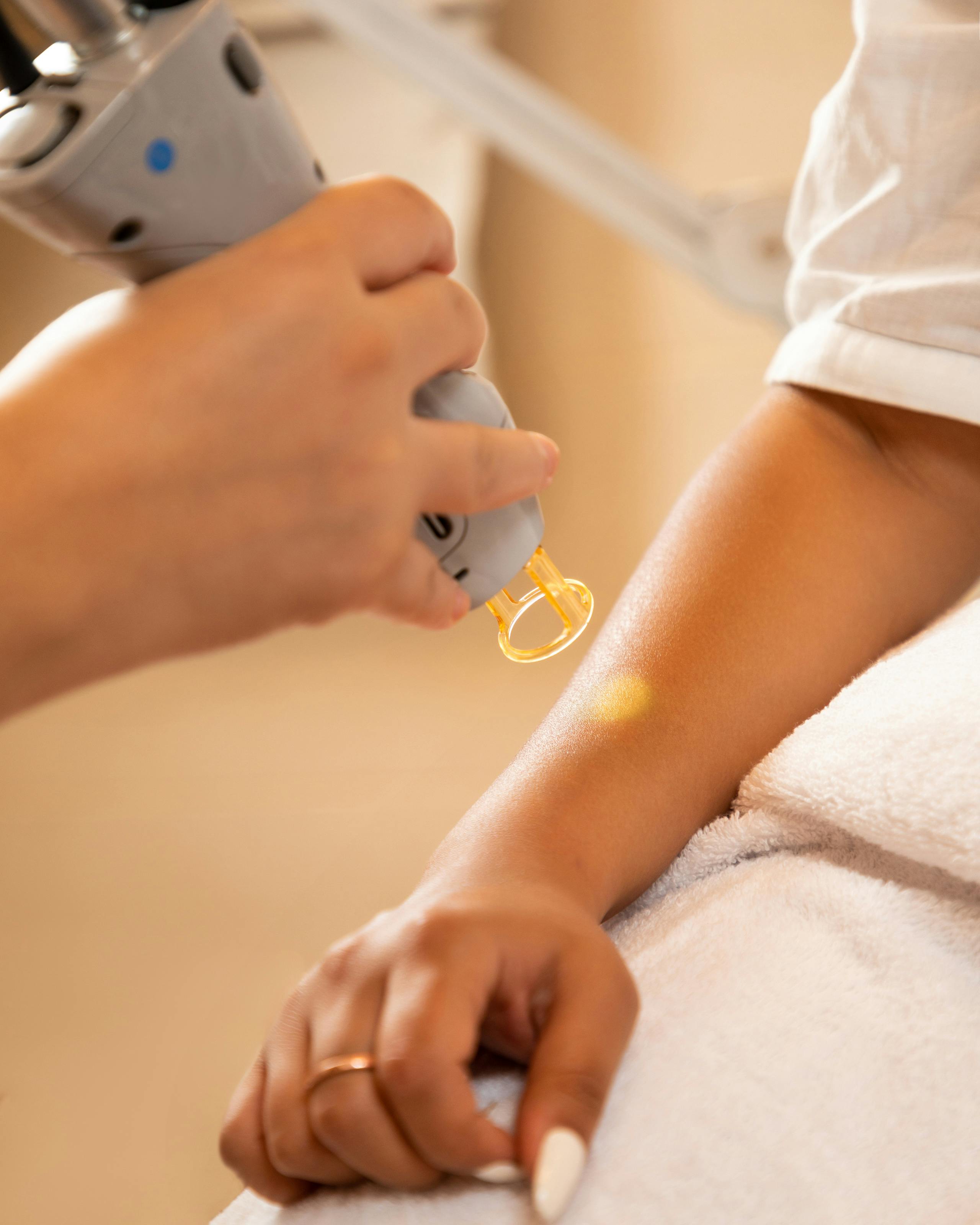Want to get rid of an old tattoo?
That tattoo that once held deep meaning might now feel like a mistake, or perhaps your lifestyle has changed and you need a fresh start. You're not alone in wanting to remove unwanted ink. Tattoo removal has become increasingly popular as technology advances, offering safer and more effective solutions than ever before. Whether it's a name from a past relationship, a design you've outgrown, or a piece that didn't turn out as expected, modern removal techniques can help you reclaim your skin and confidence.

What is Tattoo Removal and How Does It Work?
Tattoo removal is a medical procedure that breaks down the ink particles embedded in your skin, allowing your body’s natural immune system to flush them away. The most common and effective method uses laser technology, specifically Q-switched lasers that emit short pulses of intense light. These lasers target the tattoo pigments without damaging surrounding tissue, fragmenting the ink into smaller particles that your lymphatic system can gradually eliminate.
The process isn’t immediate and requires multiple sessions spaced several weeks apart. Different colors respond differently to various laser wavelengths, with black and red inks typically being the easiest to remove, while green, blue, and yellow pigments can be more challenging. Factors like tattoo age, size, location, and your skin type all influence the removal timeline and success rate.
Understanding Tattoo Removal Prices and Cost Factors
Several factors influence the total cost of removing your tattoo. The size of your tattoo is the primary determinant, as larger pieces require more time and sessions. Professional tattoos with dense, deep ink typically cost more to remove than amateur tattoos. The number of colors also affects pricing, since different pigments may require different types of lasers.
Location matters both geographically and on your body. Urban areas generally have higher prices, and tattoos on areas with better circulation, like your arms or legs, may respond faster than those on hands or feet. Most clinics charge per session, and you’ll likely need anywhere from 6 to 20 treatments depending on your specific situation.
Finding Quality Tattoo Removal Services in Your Area
When searching for tattoo removal services locally, research is crucial for both safety and effectiveness. Look for clinics staffed by licensed medical professionals, such as dermatologists or certified laser technicians. Many plastic surgery centers, dermatology offices, and specialized laser clinics offer these services.
Check credentials and certifications, read reviews from previous patients, and don’t hesitate to ask about the specific laser technology they use. Newer picosecond lasers often provide better results with fewer sessions compared to older nanosecond technology. Schedule consultations with multiple providers to compare their approaches, experience levels, and comfort in answering your questions about the process, timeline, and expected results.
| Provider Type | Average Cost per Session | Key Features |
|---|---|---|
| Dermatology Clinics | $200-$800 | Medical supervision, advanced lasers |
| Laser Specialty Centers | $150-$600 | Focused expertise, multiple laser types |
| Plastic Surgery Offices | $300-$1000 | Comprehensive aesthetic services |
| Medical Spas | $100-$400 | Relaxing environment, competitive pricing |
Prices, rates, or cost estimates mentioned in this article are based on the latest available information but may change over time. Independent research is advised before making financial decisions.
What to Expect During the Removal Process
Your first appointment will typically involve a consultation where the practitioner assesses your tattoo and discusses realistic expectations. They’ll likely take photos, discuss your medical history, and perform a patch test to see how your skin responds to the laser. This initial visit helps determine the treatment plan and estimated number of sessions needed.
During treatment sessions, you’ll wear protective eyewear while the technician uses the laser to target your tattoo. Most people describe the sensation as similar to getting tattooed, though some find it more or less painful. Sessions can last anywhere from a few minutes for small tattoos to over an hour for large pieces. Afterward, you’ll receive specific aftercare instructions to promote healing and prevent complications.
Preparing for Your Tattoo Removal Journey
Success in tattoo removal starts before your first treatment. Avoid sun exposure to the tattooed area for several weeks beforehand, as tanned skin increases complication risks. Stay hydrated, maintain good overall health, and avoid blood-thinning medications if medically appropriate. Smokers should consider quitting or reducing tobacco use, as smoking slows healing and can impact results.
Set realistic expectations about the timeline and final outcome. Complete removal isn’t always possible, and some tattoos may fade to a shadow rather than disappearing entirely. However, even partial removal can make cover-up tattoos much easier if that’s your goal. Budget for the full treatment course upfront, as stopping midway through rarely provides satisfactory results.
Getting rid of an unwanted tattoo is entirely achievable with today’s advanced laser technology and proper professional care. While the process requires patience, time, and financial investment, many people find the freedom from an unwanted tattoo well worth the effort. Research your options thoroughly, choose qualified professionals, and maintain realistic expectations throughout your removal journey. With the right approach, you can successfully remove that old tattoo and move forward with confidence in your appearance.
This article is for informational purposes only and should not be considered medical advice. Please consult a qualified healthcare professional for personalized guidance and treatment.




